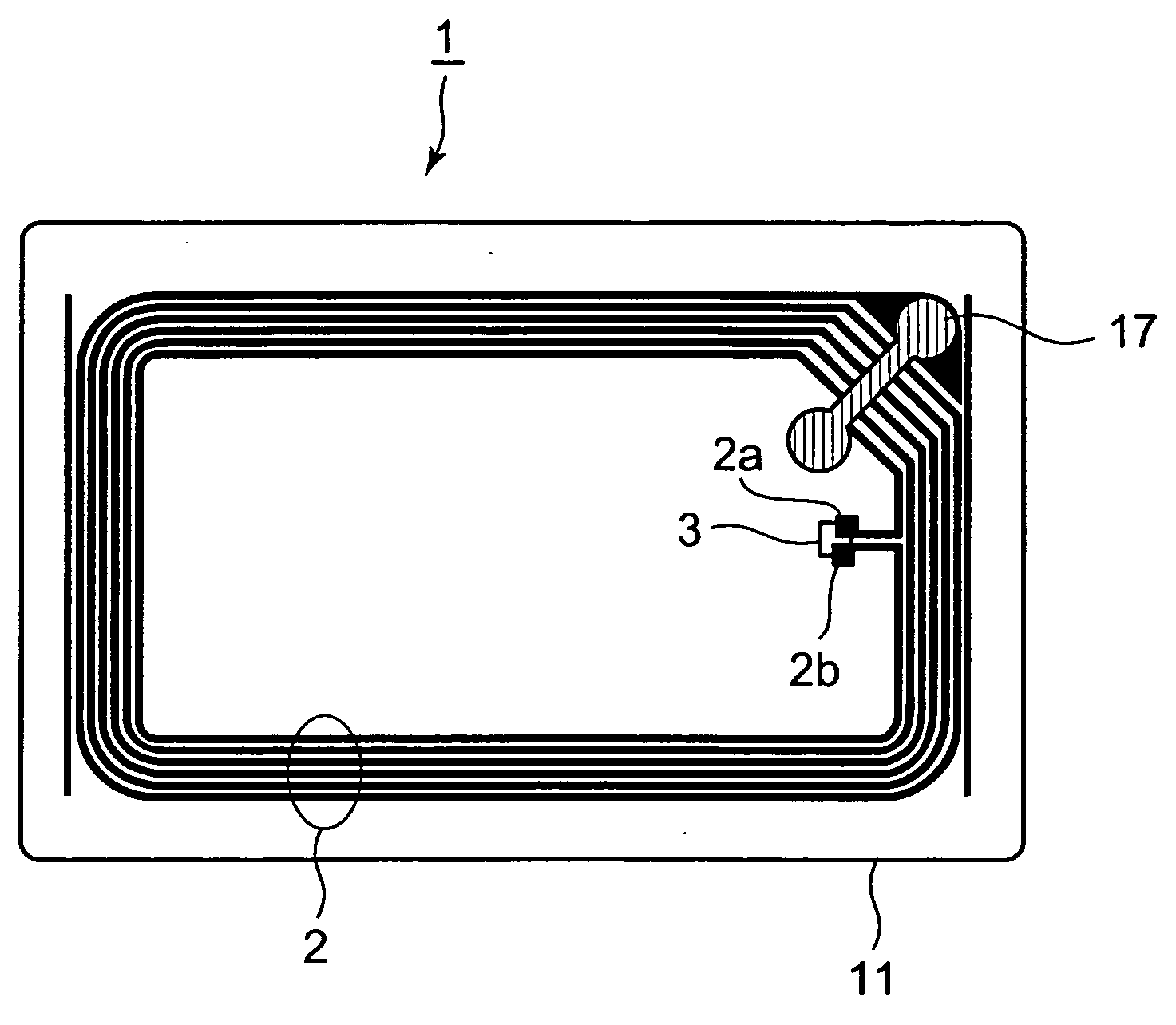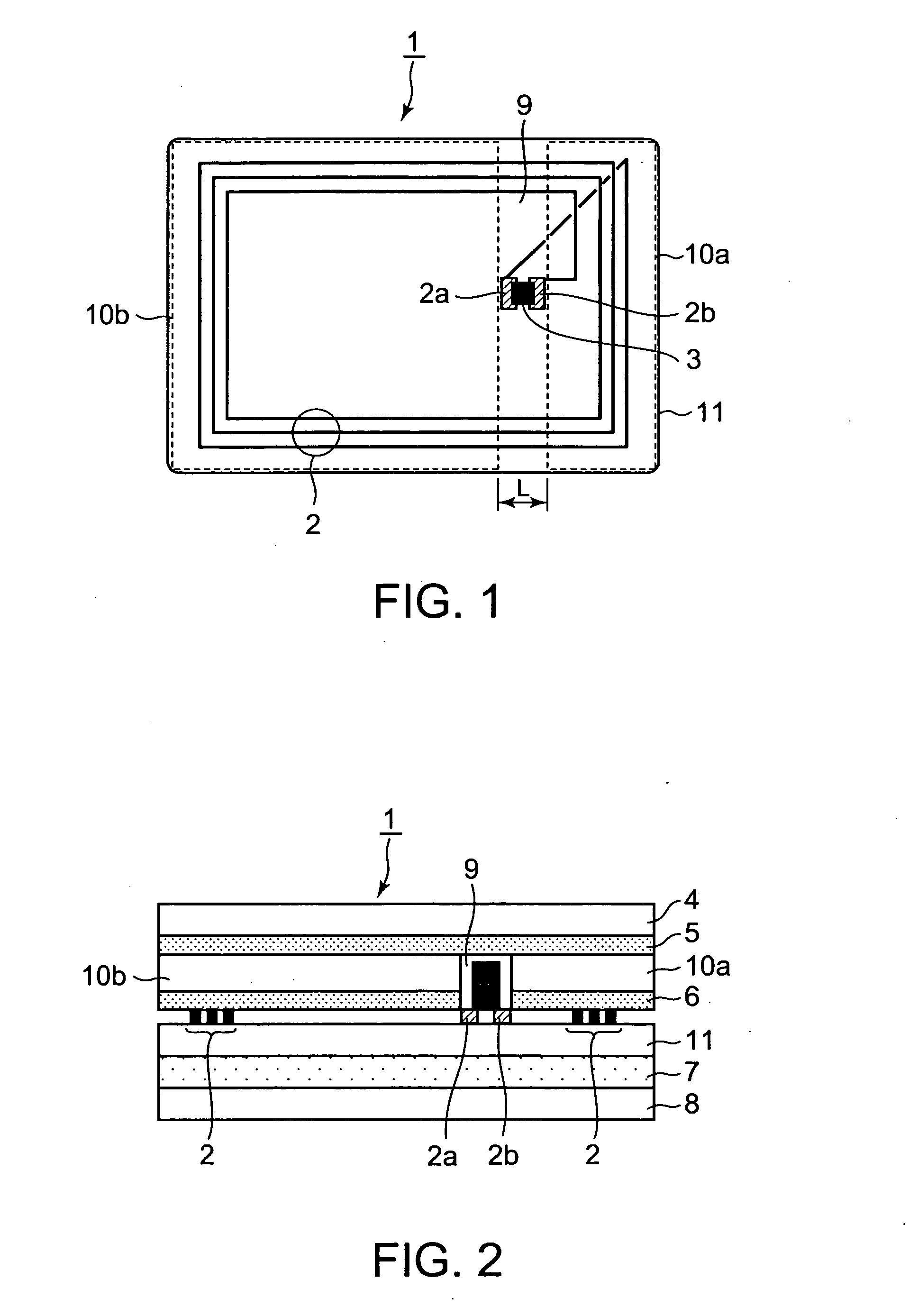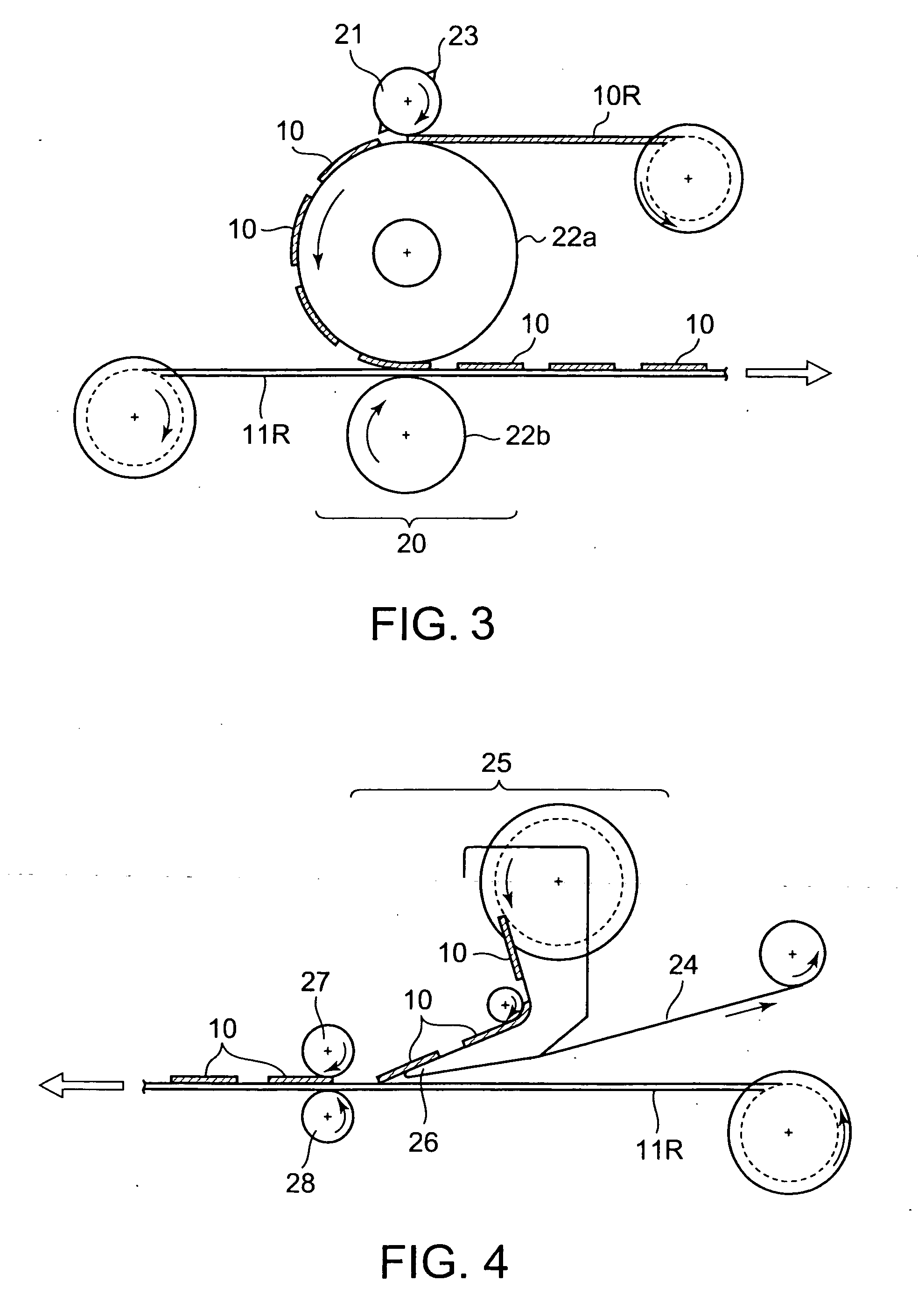Noncontact tag and method for manufacturing the same
a non-contact, tag technology, applied in the direction of burglar alarm mechanical actuation, instrument, hand-held device removal, etc., can solve the problems of fatal damage, unavoidable external stress, and difficult to produce non-contact ic tags cheaply, so as to achieve relatively easy production of non-contact ic tags and avoid external forces
- Summary
- Abstract
- Description
- Claims
- Application Information
AI Technical Summary
Benefits of technology
Problems solved by technology
Method used
Image
Examples
first embodiment
[0046]The present invention relates to a noncontact IC tag having a structure effective for IC chip protection (hereinafter simply referred to as a “noncontact IC tag”) and to a method for producing the noncontact IC tag. With reference to the accompanying drawings, the present invention will be described hereinafter. FIG. 1 is a diagrammatic plan view of a noncontact IC tag of the present invention, and FIG. 2, a sectional view of the noncontact IC tag. FIG. 3 is a view illustrating a method for producing a noncontact IC tag, and FIG. 4 is a view illustrating another method for producing a noncontact IC tag. FIGS. 5(A) and 5(B) are views illustrating a processing method for producing a noncontact IC tag.
[0047]As shown in FIG. 1, a noncontact IC tag 1 of the present invention comprises a base film 11, an antenna pattern 2 formed on the base film 11, and an IC chip 3 connected to both ends 2a, 2b of the antenna pattern 2.
[0048]On both sides of the IC chip 3, two strip members 10a, 10...
second embodiment
[0096]The present invention relates to a flame-retardant tag in the form of a noncontact IC tag, a resonance tag, or a magnetic tag. The flame-retardant tag of each type will be described hereinafter with reference to the accompanying drawings.
[0097]FIG. 7 is a plan view of a flame-retardant tag of the present invention, in the form of a noncontact IC tag, and FIG. 8 is a sectional view of the flame-retardant tag shown in FIG. 7. FIG. 9 is an exploded perspective view of a flame-retardant tag, in the form of a resonance tag, of the present invention. FIG. 10 is an exploded perspective view of a flame-retardant tag, in the form of a magnetic tag, of the present invention, and FIG. 11 is a plan view of a magnetic tag in the form of a label.
[0098]As shown in FIG. 7, a flame-retardant tag 110, in the form of a noncontact IC tag, of the present invention comprises a base film 111, an antenna coil (antenna pattern) 112 formed on the base film 111, and an IC chip 113 connected to both ends...
example 1
[0142]A laminate of a halogen-free, flame-retardant ABS resin (an alloy of ABS and PC (polycarbonate)) sheet with a thickness of 50 μm (“PSZ950” manufactured by Shin-Etsu Polymer Co., Ltd., Japan) and aluminum foil with a thickness of 25 μm, obtained by dry lamination, was used as the base film 111 of a noncontact IC tag label. A photosensitive resist was applied to this base film. The resist surface was covered with a photomask having antenna coil patterns and was then exposed to light. After conducting exposure development, the resist layer was photo-etched, whereby an inlet base film having antenna coils 112 as shown in FIG. 7 was obtained. The external size of each antenna coil 112 was made about 45 mm×76 mm.
[0143]To both ends 112a, 112b of each antenna coil 112 on the above-described inlet base film 111, an IC chip 113 with a plane size of 1.0 millimeter square and a thickness of 150 μm was connected by hot pressing with the IC chip 3 facing down. A 50-μm thick surface-protecti...
PUM
 Login to View More
Login to View More Abstract
Description
Claims
Application Information
 Login to View More
Login to View More - R&D
- Intellectual Property
- Life Sciences
- Materials
- Tech Scout
- Unparalleled Data Quality
- Higher Quality Content
- 60% Fewer Hallucinations
Browse by: Latest US Patents, China's latest patents, Technical Efficacy Thesaurus, Application Domain, Technology Topic, Popular Technical Reports.
© 2025 PatSnap. All rights reserved.Legal|Privacy policy|Modern Slavery Act Transparency Statement|Sitemap|About US| Contact US: help@patsnap.com



